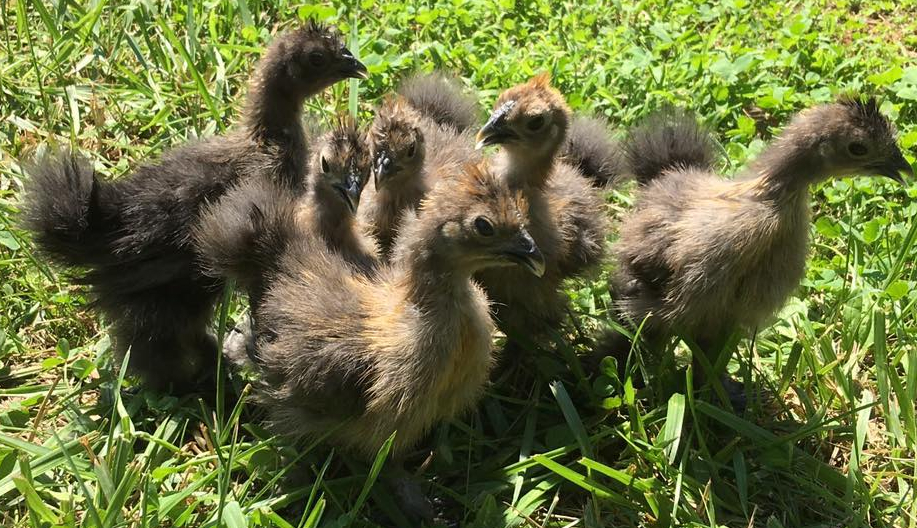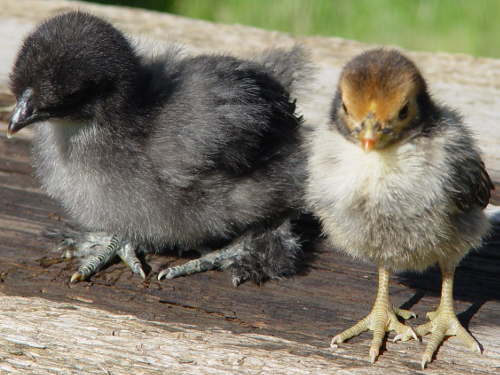Why are bantams only sold as straight run

Why are bantams only sold as un-sexed or straight run?
Why can't hatcheries and breeders sex the bantam chickens they are selling? I saw Mike Rowe sexing chickens on Dirty Jobs but when I was last in, the bin at my TSC (Tractor Supply for non US readers) was just assorted, un-sexed bantams of multiple breeds. Usually I see Sebrights, Old English Games, d'Uccles, and Cochins the most. Also Looking in some catalogues they sell straight run only.
Why is that? Is it because they are such little chicks that they fear they may hurt them trying to sex them? Does any other hatchery sell pullet bantams?
It's easier and more cost effective for hatcheries to sell straight run. Also there is not the volume of bantam sales to help make it worth wile. At first inspection it is probably purely a business decision on the part of the hatchery.
Not many people want males or roosters so sexing bantams effectively wastes 50% of the hatched stock. If you sell straight run there is no wastage.
Below: A Silkie and Sebright chick.

It's feasible to sex bantams and accuracy is the same as for large fowl. Most hatchery chickens have certain characteristic that makes them easier to distinguish between the males and females. Only difference is everything's just smaller with bantams.
Hatcheries often breed these markers into their stock over the years to make the process easy and cheap for them and because the market for bantams is much smaller this marker breeding often hasn't happened for bantams.
The reality is if you need sexed bantams then you will probably need to buy them from a breeder and get older birds.
If you find a bantam in a breed that you can feather sex then yes, it will work. I've heard though that feather sexing has to be bred that way, so you might be able to feather sex from one breeder/hatchery but not another.
Maybe it has something to do with the size of the chick. Bantams are about half the size of standard poultry. The reason is because they are so small it makes them more difficult to handle and run the risk of being injured in the sexing process.
Is it expensive to sex chickens?
Chicken sexing costs vary depending on how many birds you are having done. If you are a backyard keeper having single birds to tens of birds then it is likely to be a few $ per bird.
If you are a commercial operations having thousands of chickens sexed you can probably have 25 birds to the $ dollar.
My Pet Chicken sexes bantams, but it costs $7 extra per chick for pullets. I think most don't do it because they are so small and It is much more effort for so little return.
I had 500 done in a batch once and it cost me $650. so that was 1.50 a bird. That involved a vent sexer coming to my place for the morning and examining every chicken. It was almost 100% accurate with only 1 male missed.
Being able to vent sex chickens requires great skill that takes much time to learn.
Sexing bantams:
Bantam is a size, not a breed so they are sexed in the same way as other chickens. Bantams are just small chickens. There are dozens of breeds, colours and varieties.
Ways in which bantam chickens are sexed:
1. Colour sexing
2. Feather sexing
3. Head spot sexing
4. Vent sexing
5. Pattern sexing
6. Personality or behaviour sexing
Are there bantams you can colour sex?
Colour sexing happens when a specific combination of parents produces chicks of different colours. In some breeds like the cream crested Legbars this genetic quirk has been bread into the breed and the males and females can be told apart at hatching.
It is easier to see than to explain. Day old males will have a lighter silver head. Females will be different in appearance, darker and their heads are more of a brown. When they start to feather out 95% of the time males will have dark breast feathers and females will be light brown instead.
Feather sexing:
Feather sexing only works on certain breeds. It works because in some breeds of both large fowl and bantam chicken the feathers grow in at different rates between the sexes.
Feather sexing needs to happen 24 to 48 hours of hatching and happens the same way it would with the LF.
Securely hold the chick being careful not to crush it. Flip it onto it's back and spread open the wing and look at the wing tip feathers or primaries. If all the feathers on the wing tip look the same length it is a male. If there is a noticeable difference with some of the feathers being long and some being half the length you have a female.
The females tend to feather out more quickly than the males. The hens feather up faster and more evenly whereas the cockerels tend to feather in patches on the shoulder first. This not a 100% accurate way to sex any chicken though and this is why hatcheries don't use this technique.
Head spot sexing:
The spot on the head of some breeds is a dead giveaway 98-99% of the time.
Vent sexing:
This is a completely accurate but time consuming method that involves checking the shape and structure of the vent in every chick you need to sex.
It requires a long apprenticeship and much training to be able to do it accurately.
All breeds of chicken and bantam can be vent sexed.
Pattern sexing:
Some breeds like the Welsummer can be sexed by the pattern on their back when still chicks .
Wyandottes can be sexed by the line across the eyes.
Other methods that may work or give some idea of a bantam chickens sex are:
Personality sexing:
Personality or behaviour sexing is based on watching the young birds to see how they behave over time.
Males often:
1. Roost high above everyone else. Young males occasionally roost outside.
2. Mock fight and bump chests.
3. Make a lot more noise.
My wife says she can identify the boys by the amount of kicking and screeching they did when you picked them up.
Hens often stay quiet and are more docile and are generally happier to be held.
Comb sexing:
As for the comb sexing This is simply about deciding which of your chicks has a bigger comb when hatching, these are more likely to be boys.
